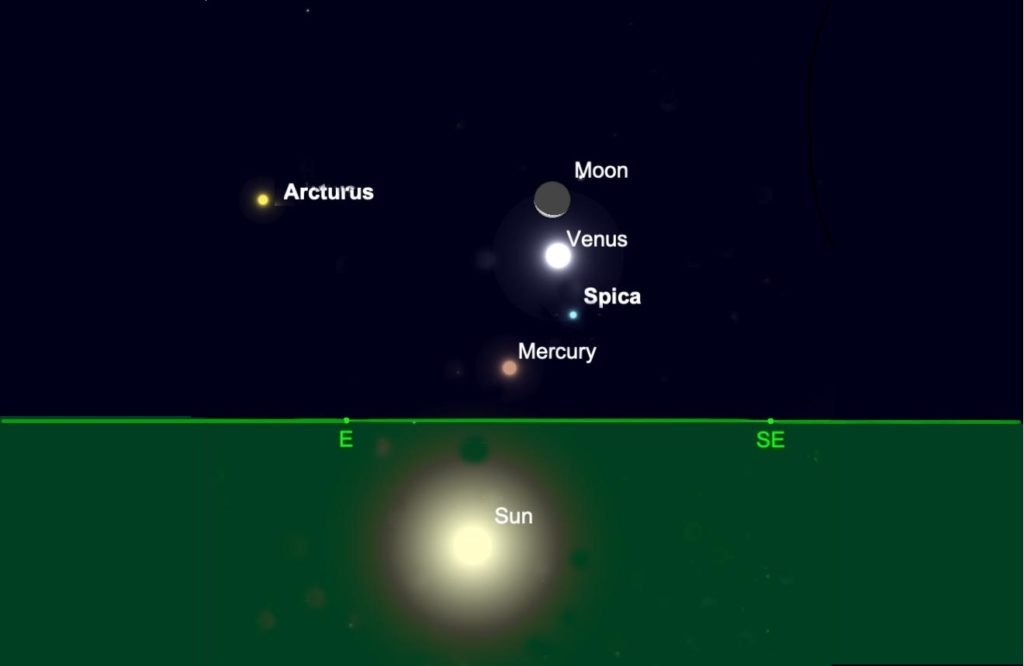Sky Report: November 9 – November 15

All five naked-eye planets are visible tonight, three in the evening sky and two in the morning (three in the morning if you count Mars twice). Uranus and Neptune are out too, in the vicinity of Mars, if you have a telescope. This is an unusual bounty.
Mars and Jupiter are the brightest objects in the evening sky, and they’re on opposite sides of the sky. Orange Mars is rising in the east while off-white Jupiter is setting in the west. Mars was closest to earth just over a month ago and it’s receding in the distance as the faster moving earth leaves it behind, but it’s a slow process and Mars is still brighter than any star. Redder, too. Jupiter has regained its status as brightest planet in the evening sky, but not by much.
Saturn is immediately to the left of Jupiter. If you’ve been watching them you’ve noticed that the separation is steadily decreasing. They’re now only 4° apart but they’ll almost touch in five weeks, so monitor them. Jupiter and Saturn are low in the southwest as darkness falls but Mars rises higher until 10 p.m.
Venus has been brilliant in the morning sky for months, shining as the brilliant “morning star” in the east before sunrise. Now it’s joined by its junior partner Mercury. Mercury orbits close to the sun and never strays far from it, so it’s always seen near the horizon, and it’s mandatory to have a low eastern horizon to spot it at all. Look for it 13° to the 7 o’clock position from Venus – a little more than the width of your fist held at arm’s length. The best morning to look is Thursday the 12th when the moon joins them with two bright stars nearby. Mercury remains visible – with difficulty –- until about the 20th.
The moon is new on the 14th. How soon after can you spot it? It is too close to the sun to see on the 15th but look for it at about 6 p.m. on the evening of the 16th very close to the southwest horizon as the sky is still growing dark, and use binoculars (which every astronomer should own). It will be the slimmest of crescents.
Recently discovered Comet c/2020 M3 ATLAS is visible in small telescopes near the middle of Orion at magnitude 8½. Google the comet’s full name for maps and details.
Photo Credit: John Mosley
The Sky Report is presented as a public service by the Stellar Vista Observatory, a nonprofit organization based in Kanab, Utah, which provides opportunities for people to observe, appreciate, and comprehend our starry night sky. Additional information is at www.stellarvistaobservatory.org. Send questions and comments to John@StargazingAdventures.org.






Comments are closed.